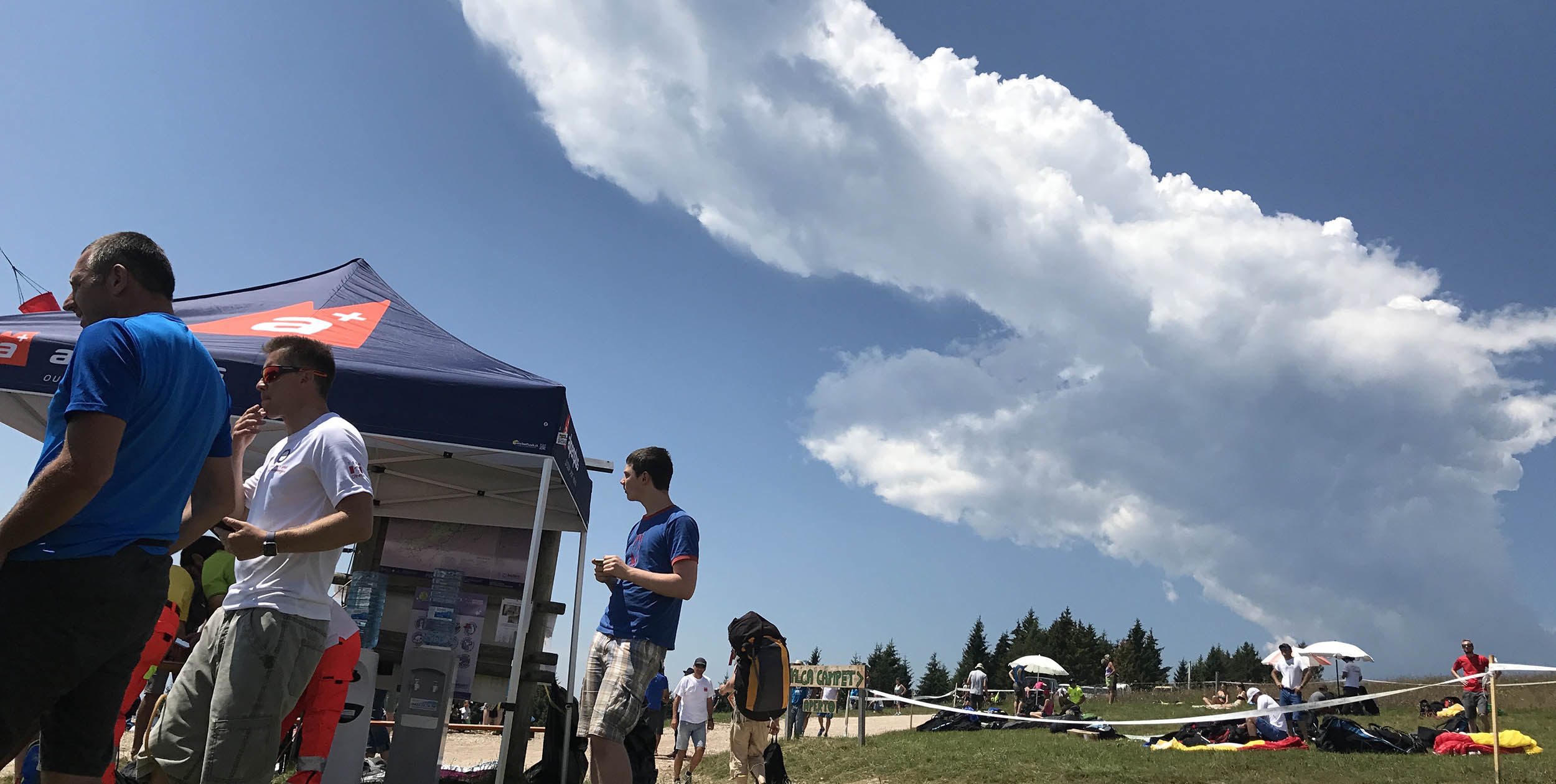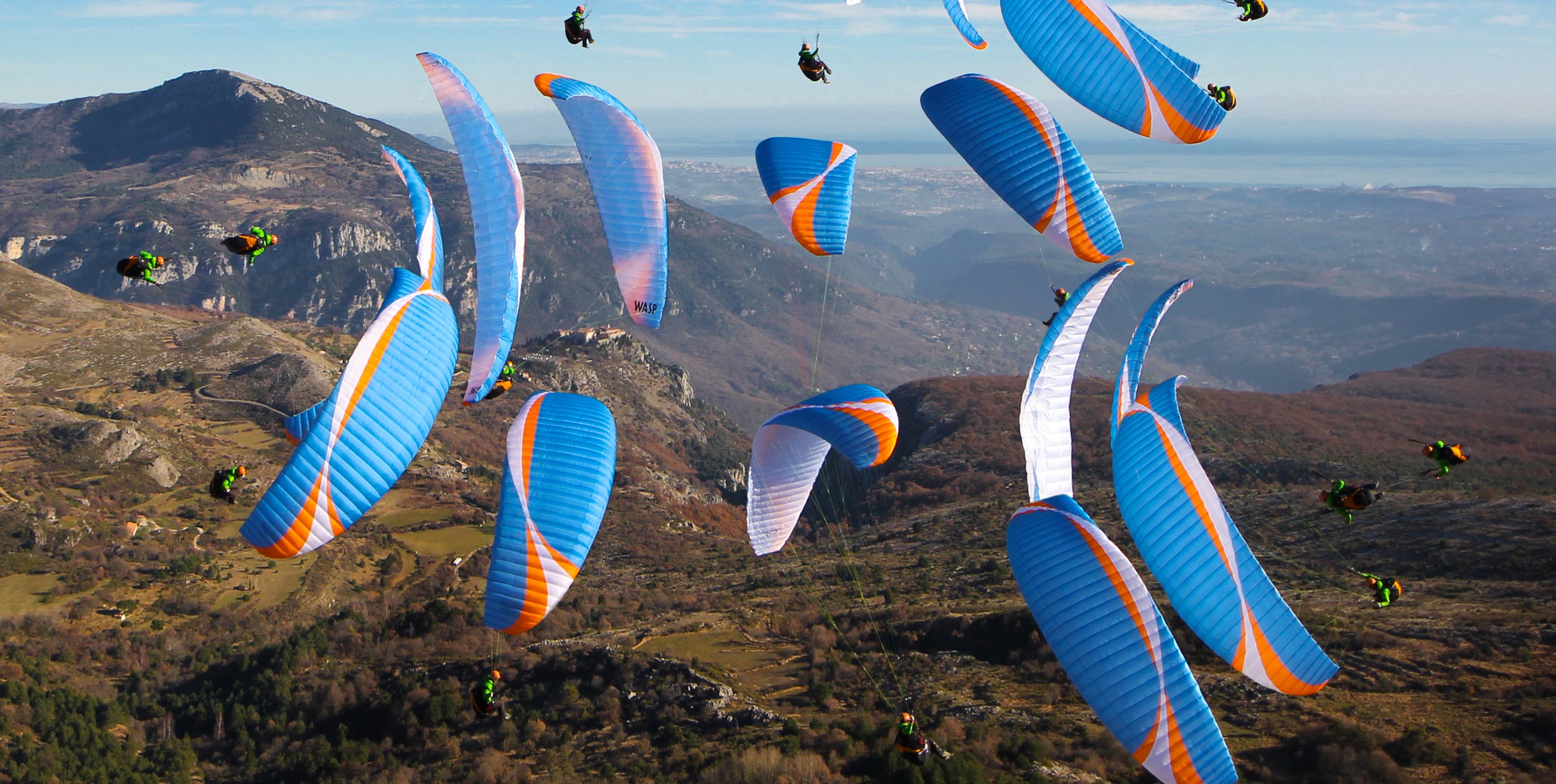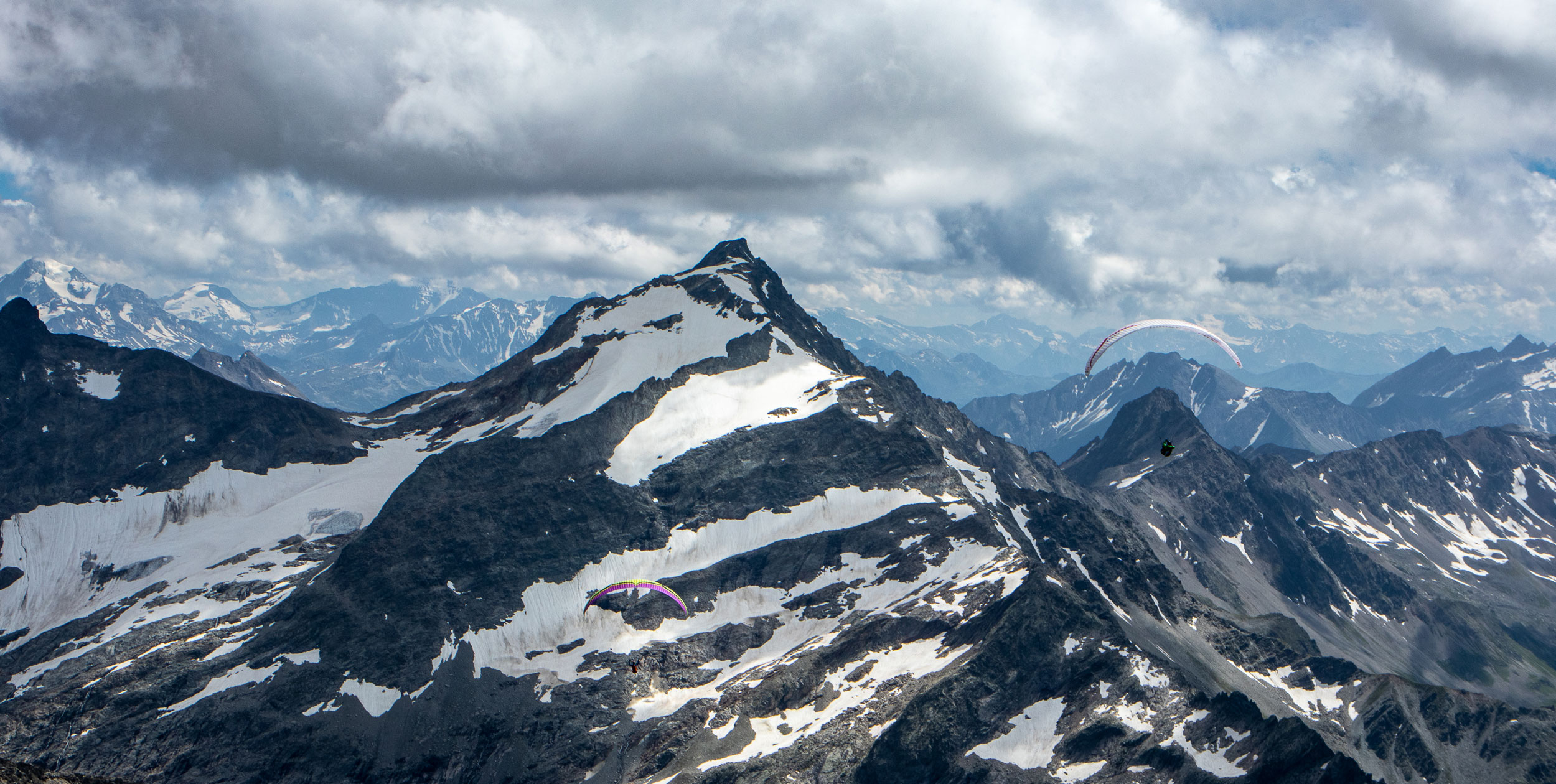Bruce Goldsmith takes us on a cautious glide…First published in Cross Country magazine, 2005
Every pilot learns at paragliding school not to fly in the lee side. Flying in the lee is obviously dangerous because of lee side turbulence and rotor. This rotor can be violent leading to collapses and accidents.
In the lee side even a reserve parachute may not work if the air is too turbulent. However, a meteorologist once told me that all thermals start in the lee side and if you fly in major competitions you’ll see top pilots flying in the lee on a regular basis.
And what about protected flying sites such as Greolieres where you often fly the lee side? Why is it sometimes perfectly safe to fly in the lee and at other times extremely dangerous? And what exactly is conical hill convergence? None of these are easy questions to answer, but I hope that this article will give answers to at least some of these questions.
Every thermal starts in rotor
Thermals start when the sun heats the air unevenly. If the wind blows constantly and smoothly over the ground, then the ground will heat the air in a similarly smooth and constant fashion, which is not ideal for thermal formation.
What we need for thermals to form are differences in the air temperature. As soon as you introduce an obstruction into the airflow such as a house, a fence or a hill, you will get an area of turbulence behind the obstruction.
Sometimes the obstruction allows the air to remain still for a time, protected from the wind, allowing the air a chance to warm up. Then the turbulence may separate the bubble of warm air from the ground releasing it into the wind above as a thermal.
The same thing can happen on a small or large scale, so you may get thermals being kicked off behind a fence, a house or a hill as shown in the diagram. You can even get wind shadows or rotor behind a thermal itself, which can act as an obstruction to the prevailing wind.
So the lesson to be learnt is that rotor can be just as much a friend to the thermal pilot as a hazard.
Size Matters
It’s difficult to say when it is safe to fly in the lee side of an obstruction. The simple rule is – if in doubt, don’t!’. That is of course the ‘cover your arse/limited liability answer that you can get from any paragliding school or textbook. However, this doesn’t really solve our problem… it’s just the safe answer.
My own personal experience says that the single most important factor is the size of the hill. The bigger the hill or mountain, the more protection it will offer.
As an example, you can almost never fly in the lee side in the UK where the hills rarely reach more than 500m high. On the other hand, in Tenerife, nearly all the flying is done on the lee side of Mount Tiede which towers to over 3,000m (e.g. the site of Taucho).
You can even fly in the lee side in Tenerife when the prevailing wind is as much as 50km/h, however, you can expect strong lee side thermals and strong winds if you stray outside the protected area.
Wind Strength
The lighter the wind, the less dangerous flying in the lee side is likely to be. Wind strength is extremely important when trying to fly safely in the lee. Flying in the lee in a 5km/h wind should pose very little problem, but if the wind is greater than 20km/h, then leeside flying is likely to be extremely hazardous and dangerous.
Solar Heating
Thermal heating of the lee side makes things a lot safer. This means that even if the air is turbulent on the lee side, it’s being heated by the sun and so the air will generally have an upwards motion. This is also the case in Tenerife where the site of Taucho faces southwest and into the afternoon sun. Other sites such as Greolieres and Monaco benefit from a similar thermal-powered protection.
Sea Breezes
If the heating is combined with a sea breeze or a valley wind system, then the protection from the prevailing wind is even greater. The presence of the sea tends to lead to a larger scale air movement than simple rotor, so helping to make the air less turbulent.
Conical Hill Convergence
When air flows round an isolated hill or mountain, the air divides on the upwind side of the hill and then flows together again on the downwind side.
The area in front of the hill is therefore an area of divergence, and the area behind the hill is an area of convergence. Therefore, where the air is converging, it can produce lift, especially if there’s some thermic activity as well that helps produce some upward movement in the air when the air converges.
If the air is not going up due to thermal activity, then it may be falling just as strongly as it could be rising.
You can get an area of lift downwind from a hill rather than an area of rotor, which is normally what you would expect. There are many different factors resulting in lift behind a hill, rather than rotor. Factors that help you get lift are:
1. The size of the hill, the bigger the better.
2. Heating from the sun on the downwind side of the hill.
3. The stability of the air. If the air is unstable, the air may flow over the top of the hill instead of round the side, meaning that it will come crashing down in an area of sink behind the hill. A layer of stable can help stop the air displacing vertically in front of the hill can help.
4. The exact shape of the hill.
Summary
The main factors to consider in flying in the lee are:
1. Wind strength
2. Size of the obstruction
3. Solar heating on the lee side
4. Air stability
5. Shape of the hill
6. Sea breeze or valley wind considerations
There can be no hard and fast rule as to whether if it’s safe for flying in the lee, everyone must make their own decisions based on their personal skill level and their ability to cope with any turbulence they are likely to encounter.
One last consideration is that it’s often the edge of the lee side which is the most dangerous area. If you are completely in the lee, you may be fully protected – but if you’re at the edge of the protected area, then you may well encounter the maximum amount of turbulence.
If you intend to fly in a protected area you need to go all the way into the lee. It’s often more dangerous to test out the waters by feeling around the edge of the protected area than by flying all the way into it.
One final word. Lee side flying is only for very experienced pilots, or for pilots under the instruction of a very experienced pilot flying in controlled conditions. Please take all possible precautions when considering flying in the lee.
• Got news? Send it to us at news@xccontent.local







